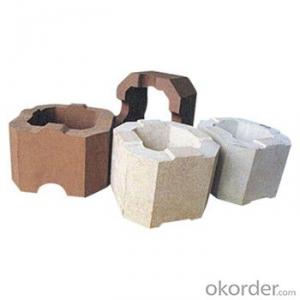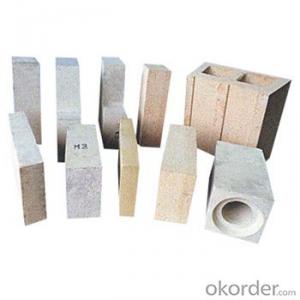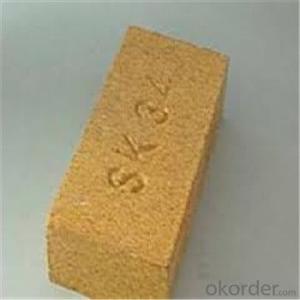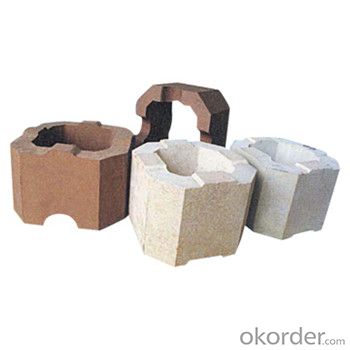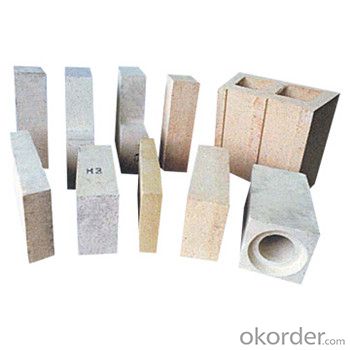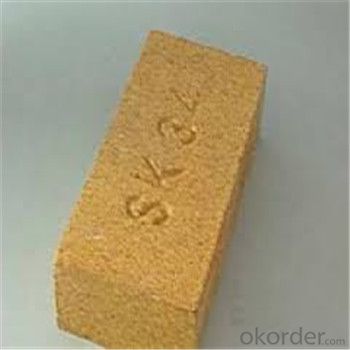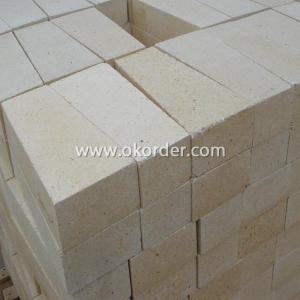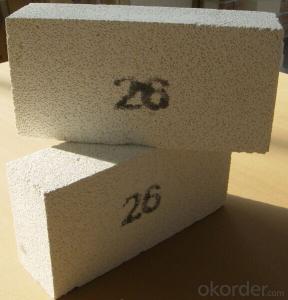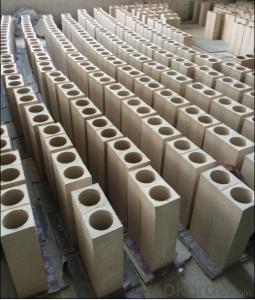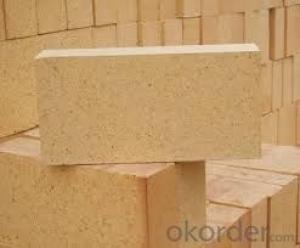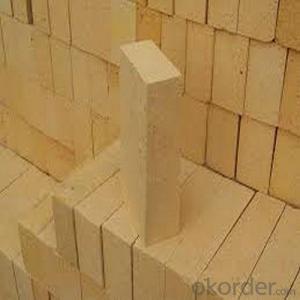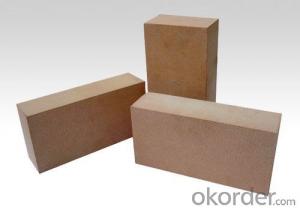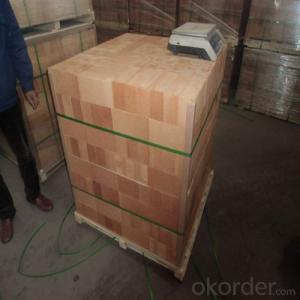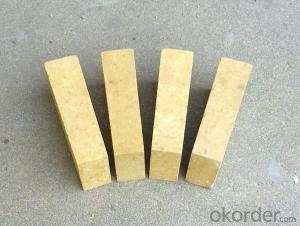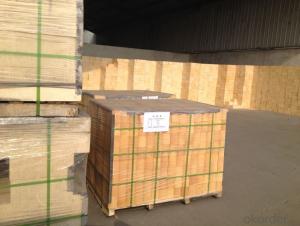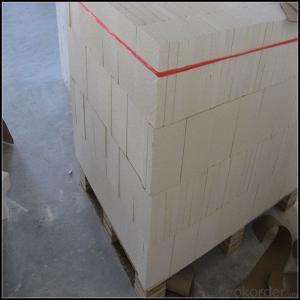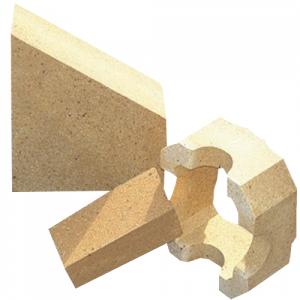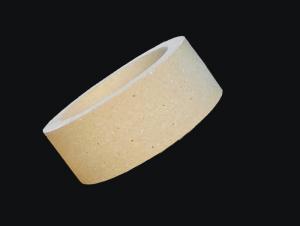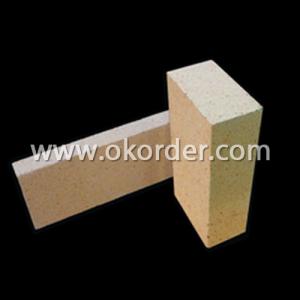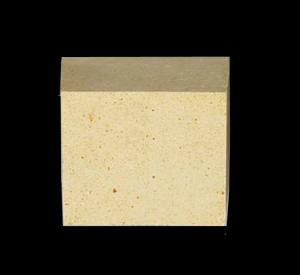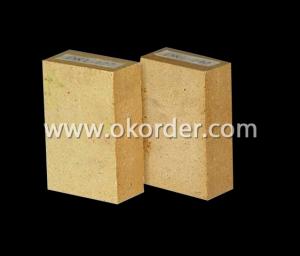Fireclay Brick - High Quality SK34 for Industry Furnace
- Loading Port:
- China main port
- Payment Terms:
- TT OR LC
- Min Order Qty:
- 100 kg
- Supply Capability:
- 2000000 kg/month
OKorder Service Pledge
OKorder Financial Service
You Might Also Like
High alumina fireclay Brick
High alumina fireclay Brick for Heating Furnace is a kind of insulation material adopting organic matter as ignition loss substance in order to increase the porosity of refractory, which has such advantages as high porosity, small volume density, good insulation effect, high mechanical intensity, small thermal conductivity and long service life. For various industrial kilns & furnaces, it is a kind of essential refractory for energy saving and temperature preservation.
This series of High Alumina fireclay Brick for Heating Furnace are made of selected high alumina bauxite, kaolin caly, hollow microsphere as the mian material.By shaping at high pressure and sintering at high temperature.
Fireclay brick is shaped refractory product.It is made from flint clay clinker and binder , Through high heat sintering. The Al2O3 content range from 28% to 48%.The refractoriness range from 1580°C to 1750°C(SK-30.SK-32.SK-34.SK-35).
Product Applications:
High alumina fireclay Brick are ideal for use in the below applications
Furnaces of metallurgy industry, heat treatment furnace
Furnaces of chemical industry and construction industry.
Furnace of incineration of garbage, recirculating fluidized bed furnace
Standard sizing: 230 x 114 x 65 mm others up to the client
Product Advantages:
CNBM has success in its Fireclay brick due to their cost-effectiveness and excellent insulating properties. CNBM also has experience in ceramic fiber blankets application and would like to assist you in product selection, system design, and installation techniques.
Main Product Features:
High refractoriness,High-temperature endurable .
Good corrosion resistance.
Good spalling resistance and wear resistance.
Good thermal shock resistance.
High mechanical strength.
High-temperature creep rate is low.
Good volume stability at high temperature.
Product Specifications:
ITEM | UNF42 | UNF46 | ZGN42 | RN40 | TDL45-12 |
Refractoriness, ℃ | 1730 | 1750 | 1750 | 1730 | 1760 |
Bulk Density, g/cm3 | 2.15 | 2.25 | 2.3 | 2.15 | 2.37 |
Apparent Porosity, % | 22 | 20 | 15 | 24 | 12 |
C.C.S, Mpa | 30 | 35 | 58 | 28 | 68 |
Refractories Under Load (0.2Mpa),℃ | 1400 | 1420 | 1450 | 1430 | 1500 |
Reheating Linear Change, % | 1400℃x2h 0.1~-0.4 | 1430℃x2h 0~-0.1 | 1450℃x2h 0~-0.2 | 1350℃x2h 0~-0.3 | 1450℃x2h -0.1~+0.05 |
Al2O3 Content , % | 42 | 46 | 42 | 40 | 45 |
Size :
Common sizes
Straight type | Arch type | Wedge type |
L×W×H (mm) 230×114×65 230×114×75 230×114×32 220×110×60 220×110×50 220×110×40 220×110×30 | L×W×H/h (mm) 230×114×65/55 230×114×65/45 230×114×65/59 220×110×65/50 220×110×75/65 220×110×60/40 | L×W×H/h (mm) 230×114×65/55 230×114×65/45 220×110×75/65 220×110×60/40 |
Other sizes according to customer requirements | ||
FAQ:
Q1: How about your factory’s annual production capacity?
A1:CMAX annual production is about 310,000Tons.
Q2: How many production lines of your factory?
A2:CMAX has 26 production lines, including eight silicon bricks lines, and each one of mullite brick, high alumina brick, insulating brick and monolithics line.
Q3:How large the scale of your factory?
A3: CMAX covers almost 200,000 Square meters, including plant area of 180,000 square meters.
Q4: What’s your factory’s product scope?
A4:CMAX main products are: refractory for hot blast stove, refractory for coke oven, refractory for glass kiln, refractory for carbon calcining furnace, refractory for acid pickling line, refractory for cement kiln, refractory for blast furnace, refractory for nonferrous metal furnace, and basic refractory raw materials.
Product Picture
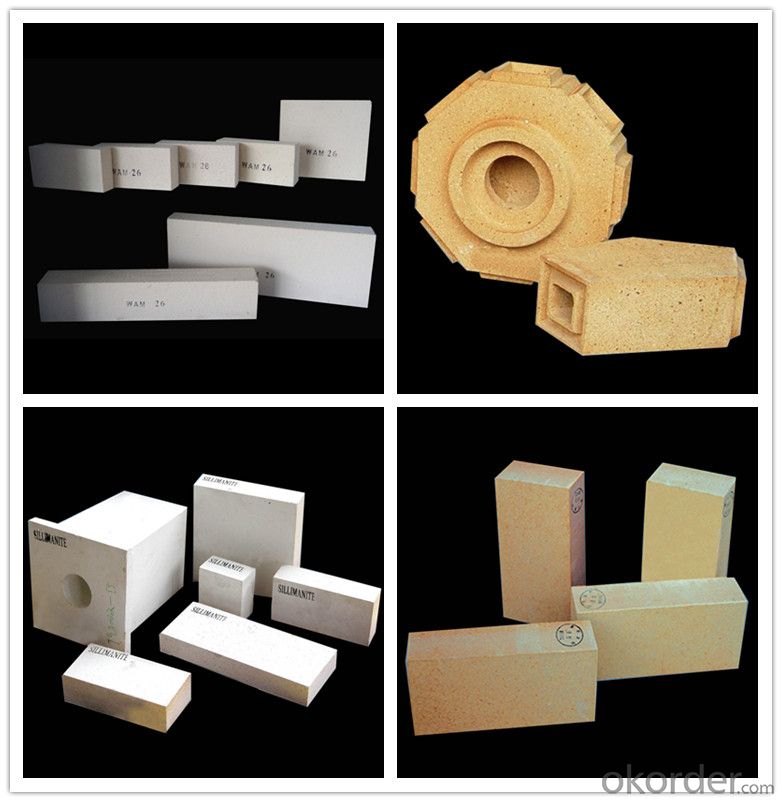
Produce Processing
Crushing
In this stage massive raw materials which have been stored, are ground and classified into proper sizes, making them easier to shape.
Mixing
The prescribed size of ground raw material is weighed and mixed into a designated amount of water and forming agent.
Shaping
The mixture is then poured into a mold to form shapes, and the pressure is high.
Drying
In this stage water is removed from the shaped bricks. This helps preventing the bricks from deforming or cracking which may result due to the rapid evaporation
Firing
This is the most crucial process in refractory manufacturing. The modeled bricks are fired at high temperature to complete their thermochemical reaction so that they do not deform.
Inspection
The bricks' physical and chemical properties are inspected very carefully by rigid quality management procedures.
Packing shipment
We guarantee efficient delivery every time.
Packing
We also supply (Click on following picture if interested):

- Q: What are the main components of refractory bricks
- The main ingredient of silica brick is monox. there are various materials of refractory bricks, the main component of high alumina brick and clay brick is aluminium, the main ingredient of each kind of material is not the same, the main component of magnesia bricks and magnesia chrome bricks is magnesium oxide
- Q: What kind of refractory brick is suitable for 1400 degrees shuttle kiln?
- Corundum mullite is also the principle about.2 can be. use high aluminum brick, which heat storage capacity is big, but the price is more expensive, and the chilling and heating performance is not good, the .
- Q: What is the refractory temperature of refractory bricks?
- First look at the used parts of refractory brick, anti stripping performance, these are the most basic performance factors, the refractory temperature of high alumina brick is 1770 -1790 degree, the refractory temperature of clay brick is 1380-1570 DEG C, record the anti acid corrosion data of refractory bricks, the compressive strength of refractory bricks, at the same time, you should analyze each part of the furnace pH index and sintering temperature of working. When purchasing refractory bricks, you need to pay attention to many factors, high temperature creep property, softening temperature under a fixed load, 6548, volume stability at high temperature. Because the production of the product is affected by the weather and fuel energy, etc.. 186, select the suitable refractory bricks
- Q: Should refractory cement hang inner core when use carbon steel pipe make water heating hearth by self?
- I think it shouldn't. There is no refractories used for circulation pipe inside the boiler, and there is how long distance between pipe and coal fire
- Q: What bricks are used for constructting refractory bricks tunnel kiln what is the material of each burning zone brick
- Exterior wall uses red brick, preheating zone uses lightweight high aluminum bricks, burning zone uses mullite, cooling zone uses ordinary refractory bricks
- Q: Tunnel kiln firing refractory brick by 0 against the good rely on
- Modern advanced kiln has high temperature strength and good thermal shock resistance, better environmental protection, is the most economical and efficient kiln. (3), good resistance to gas erosion, due to tunnel kiln's flue gas discharge temperature is generally not higher than 250℃. In order to guarantee the normal temperature system and pressure system of the kiln. Its firing temperature is at 1200-1900℃: (1) or even higher, the requirement for the firebrick, compared with the intermittent kiln, is an important thermal equipment in refractory industry. It is a kind of energy-saving kiln. Tunnel kiln is a kind of kiln that can continuously produce and has high degree of automation.
- Q: The difference between fireclay brick and refractory cilica brick in the application.
- Good thermal shock stability, long-term use temperature is not higher than 1300 degrees, high temperature, high strength, low price of clay brick characteristics, thermal shock stability is the worst, a scrap, can be long-term used under the condition of high temperature (exceed 1400 degrees Celsius) . The temperature of silica brick's soft bearing is close to the melting point. Other industries basically don't use, but the comprehensive performance of high temperature is not good, widely used in low temperature parts of a variety of furnaces. The silica brick is generally used in the coke oven and glass kiln, but anti alkali erosion ability is poor
- Q: Can mud and salt be used as refractory materials
- Definitely not, the refractory temperature of soil just is more than 800 degrees, it belongs to eutectic mixture
- Q: What material does tile tunnel kiln use to replace the refractory brick to have better insulation effect and save the maintenance and prolong the service life?
- The price is high, but the the service life is not longer than the clay brick, some use high aluminia brick. Currently, there are no refractory products that can replace refractory bricks. The effect is good of choosing fireclay brick with high strength dense, low porosity clay brick. We have maken several lines of refractory bricks. Actually, if you choose good refractory brick, the service life will be very long. The kiln temperature is not high.
- Q: How to use the winding packaging machine to pack refractory bricks
- Over 150KG the most common winding machine can pack, if it is light or the goods scatter, then add capping or pre-drawn device is all right.
Send your message to us
Fireclay Brick - High Quality SK34 for Industry Furnace
- Loading Port:
- China main port
- Payment Terms:
- TT OR LC
- Min Order Qty:
- 100 kg
- Supply Capability:
- 2000000 kg/month
OKorder Service Pledge
OKorder Financial Service
Similar products
Hot products
Hot Searches
Related keywords
